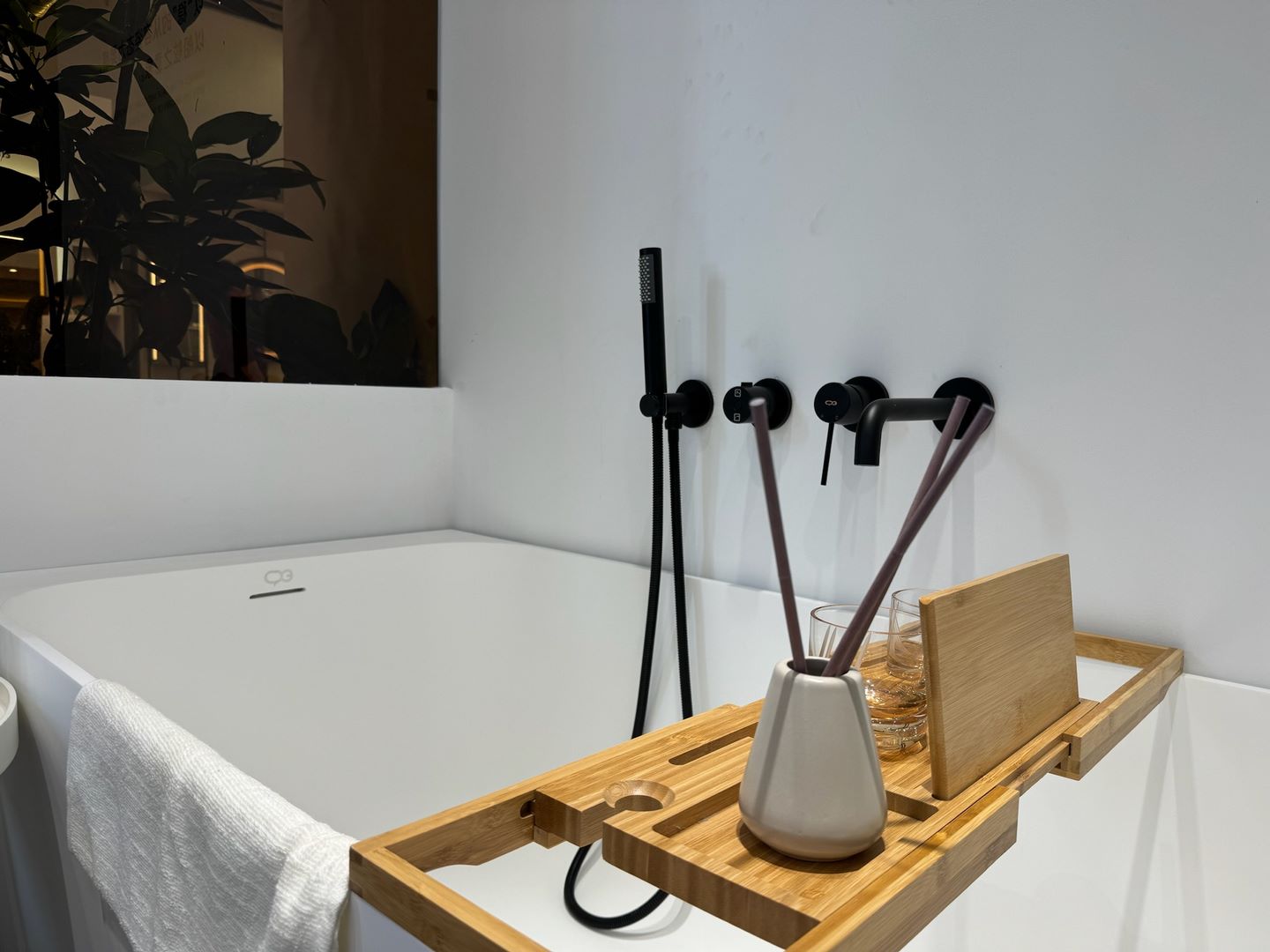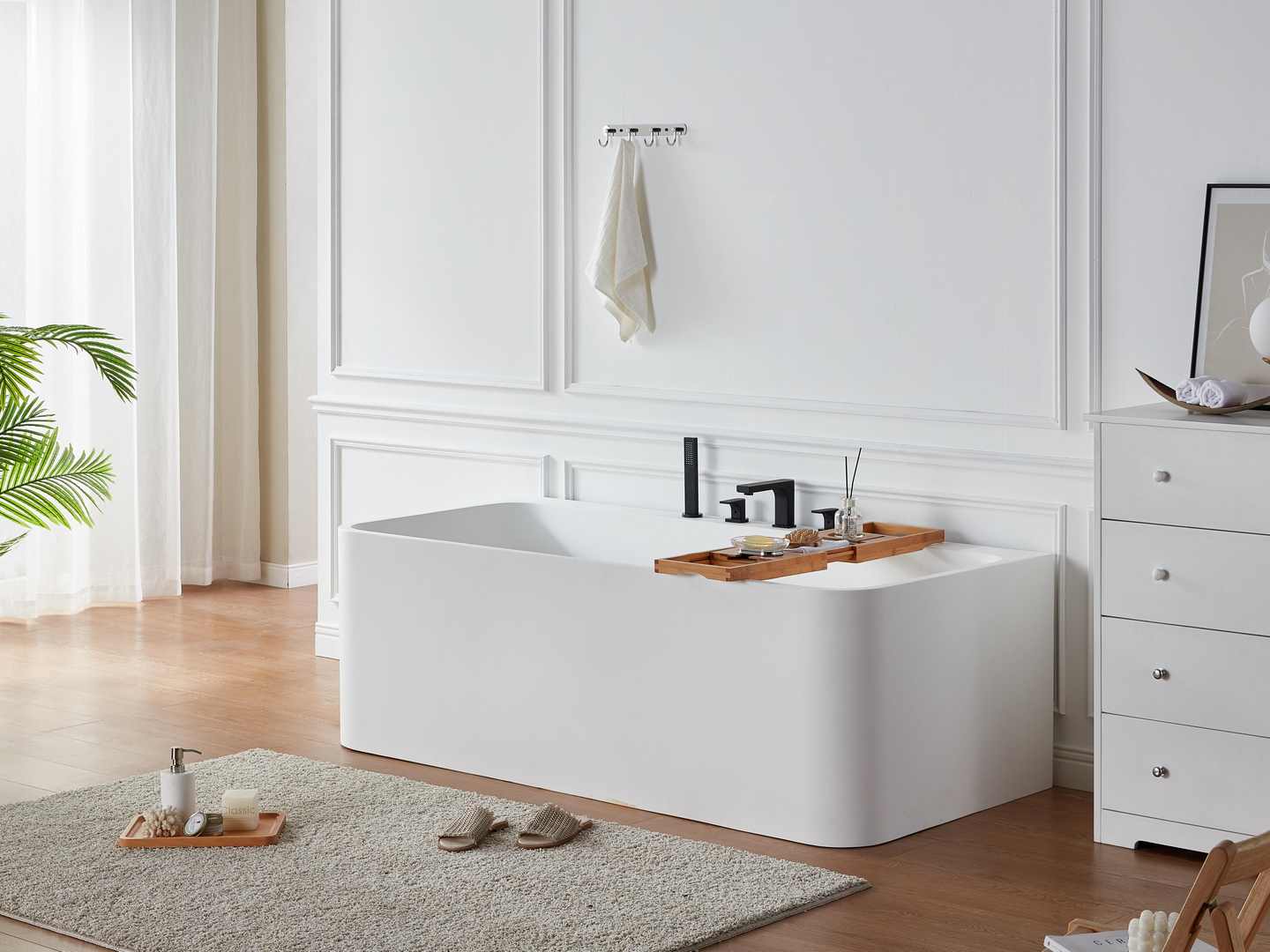Solid Surface Bathtub Maintenance Tips for Property Managers to Prevent Costly Repairs
Introduction
If you’re a property manager, you’ve probably seen solid surface used in bathtubs, countertops, sinks, and even wall panels for its durability and sleek look.
We understand that maintaining these surfaces can be a challenge—but you’re not alone.
In this article, we agree that a well-maintained bathtub is key to tenant satisfaction and cost control.
We promise to break down common maintenance issues, such as cleaning, drain pressure, damage, and thermal shock.
Plus, we’ve included practical, easy-to-follow solid surface bathtub maintenance tips tailored specifically for property managers.

Understanding Solid Surface Material
In today's bathroom product manufacturing, solid surface has emerged as a leading engineered composite material. Architects and designers frequently specify it for bathtubs, sinks, countertops, and wall panel applications due to its exceptional performance characteristics.
The material's formulation typically combines three core components:
Base resins (PMMA/PE):
Acrylic resin (PMMA) delivers superior optical clarity and sunlight resistance, making it preferable for premium installations.
Polyester resin (PE), while more economical, still provides adequate structural integrity for budget-conscious projects.
Functional filler (ATH):
Aluminum hydroxide isn't just filler – this mineral component actively improves fire safety ratings and increases surface scratch resistance.
Tests show ATH-filled surfaces maintain their integrity 40% longer than standard composites.
Color systems:
Advanced pigment technologies now allow remarkably accurate reproductions of natural materials.
From Carrara marble veins to granite speckles, these aren't mere imitations but engineered enhancements with better stain resistance.
What truly sets solid surface apart is its monolithic construction.
Unlike porous materials that trap moisture, its seamless nature prevents microbial growth – a critical advantage for hospitality or multi-family housing where hygiene is paramount.
Maintenance-wise, property managers report up to 60% reduction in cleaning time compared to traditional materials.
There has some Chinese modern freestanding bathtub companies and Solid Surface Bathtub Installation Tips for Builders you should know.

Common Maintenance Issues with Solid Surface Tubs
Solid surface tubs are known for their durability and ease of maintenance, but they are not completely immune to wear and tear, especially in frequently used rental properties or commercial spaces. Property managers should always be aware of the following common causes:
- Everyday Cleaning Residue
What most people miss:
Although solid surface materials are non-porous and highly stain-resistant, everyday use can lead to a buildup of soap scum, mineral deposits, and bath product residue. Over time, these residues can mar the surface's natural sheen and serve as a breeding ground for bacteria if not cleaned regularly. While these stains are usually just surface stains, ignoring them can reduce the visual appeal and cleanliness of the tub.
Pro tip:This is why many facilities now use pH-neutral cleaners weekly as preventative care. - Overtightening of Drain Connections
A plumber's confession:
Improper plumbing is a subtle but serious problem. If the drain is installed too tightly, it can put excessive tension on the tub's bottom surface, especially around the drain opening. This extra pressure can cause cracks, warping, or stress fractures that compromise the tub's structural integrity. This is especially common when the installation process is too aggressive or when too much sealant is applied.
Did you know?The International Plumbing Code recommends 1/4 turn past hand-tight for drain fittings. - Impact Damage During Use
The reality check:
While solid surface tubs are durable, they are not indestructible. It’s not uncommon for tenants or maintenance workers to accidentally drop shampoo bottles, handheld showerheads, or cleaning tools onto the surface of a tub. These accidental impacts can cause scratches, chips, dents, and even damaged corners, especially in thin or unsupported areas.
The Hidden Culprit:
Another common problem is chemical damage. Using harsh cleaners containing bleach, strong acids or bases, acetone, or formaldehyde can damage the tub’s surface finish, causing yellowing, dulling, softening, or permanent discoloration. Over time, this damage can affect not only the appearance but also the tub’s water resistance.
Important note: Always check cleaner labels for ASTM D6271 compatibility.
- Thermal Shock
From the field reports:
While solid surface tubs are designed to withstand temperature changes, they are not completely immune to thermal shock. Pouring extremely hot water into a tub in a cold environment (such as an unheated bathroom during the winter) can cause internal stress and hairline cracks. This can cause hairline cracks, surface discoloration, or material deformation, which may eventually require refinishing or replacement.
Engineering insight:The thermal expansion coefficient for acrylic-based surfaces is 0.0001 in/in°F.

How to Care for a Solid Surface Bathtub? (A Property Manager’s Guide)
Properly caring for a solid surface bathtub can significantly extend its life and reduce long-term repair costs. For property managers, having a clear maintenance plan in place can ensure that the bathtub remains in perfect condition. Here’s how to effectively address the most common problems:
1. Daily Maintenance Tips
Simple habits that make a big difference:
To easily keep your solid surface bathtub clean and damage-free, follow these maintenance procedures to effectively maintain and extend the life of the bathtub:
Rinse with warm water and dry the surface with a soft cloth or sponge. This helps prevent the accumulation of water spots, soap scum, and shampoo residue. (Pro tip: Microfiber cloths work best for streak-free drying.)
Use a neutral pH cleaner—avoid products containing bleach, strong acids, strong bases, ammonia, or acetone. (Check labels for "non-abrasive" and "safe for acrylic surfaces.")
Never use abrasive tools such as steel wool, metal brushes, or harsh scouring powders. These tools can scratch the surface, causing it to lose its gloss and shorten the life of the material.
Avoid scouring creams or abrasive cleaners, as they can wear away at the protective layer. (A soft sponge with dish soap often does the trick.)
Why it matters: Maintaining a gentle but consistent cleaning habit can preserve the original finish of the bathtub and prevent premature wear.
2. Prevent Drain-Related Damage
Avoiding costly plumbing mistakes:
The way the drain is installed has a significant impact on the structural integrity of a solid bathtub:
Always follow the manufacturer's installation guidelines carefully. (Many warranty claims are denied due to improper installation.)
Use flexible connectors at the drain to reduce tension and absorb any displacement, preventing stress from being transferred to the body of the tub.
After installation, inspect the area around the drain for stability and signs of strain. The tub should sit flat, without wobbling or bending. (A simple "wiggle test" can detect loose fittings.)
Avoid overtightening drain fittings, which can cause cracks or deformation over time. (Hand-tight plus a quarter-turn is usually sufficient.)
Key takeaway: Taking extra care during installation can prevent major structural issues later.
3. Control Impact and Surface Damage
Quick fixes for common wear & tear:
Minor damage is inevitable, even in the most carefully managed spaces. Fortunately, solid surface materials are repairable:
For minor scratches or scuffs, lightly sand with fine sandpaper (400 to 800 grit), then buff to restore the shine. (A car polishing compound can help with deeper marks.)
Avoid dropping heavy objects, such as shampoo bottles or shower heads, on the edges or corners of the tub, which are more susceptible to chipping or cracking. (Consider adding a rubber mat for extra protection.)
Clean the surface with a soft cloth and a mild detergent to maintain a smooth, scratch-free appearance.
If scratches are deep or dull, professional repairs may be necessary, but many small marks can be fixed yourself with care.
Did you know? Most surface damage occurs in the first 6 months due to tenant unfamiliarity—a quick orientation can help.
4. Prevent Thermal Shock
Why temperature control matters:
Thermal stress is a hidden risk that can cause subtle but serious damage:
Always preheat the surface with warm water before using the bathtub in cold conditions. This helps equalize the temperature and reduce internal tension. (Run warm water for 30 seconds first.)
Never pour boiling water (>90°C) directly into a dry, cold bathtub. The sudden temperature difference may cause hairline cracks, surface discoloration, or deformation. (Let hot liquids cool slightly first.)
Consider installing a thermostatic mixing valve in properties subject to extreme cold or tenant misuse. (This prevents accidental scalding and tub damage.)
Real-world example: A ski resort reduced bathtub cracks by 40% after adding mixing valves and posting temperature guidelines.
Final Notes for Property Managers
Document maintenance routines to ensure consistency across staff.
Train cleaning crews on approved products and techniques.
Conduct quarterly inspections to catch minor issues before they worsen.
By following these steps, you’ll maximize your bathtub’s lifespan and minimize unexpected repairs.

Conclusion
This article provided essential solid surface bathtub maintenance tips for property managers, covering common issues like daily cleaning, drain tension, accidental damage, and thermal shock.
Among these, cleaning methods and impact repair are the most frequently asked about, as they directly affect the tub’s appearance and longevity.
Meanwhile, understanding how to avoid drain-related stress and heat damage proves especially useful for preventing costly structural problems.
With proper care, solid surface bathtubs remain a smart, durable investment for any property.
Welcome to know more detailed information about products in Cpingao:
